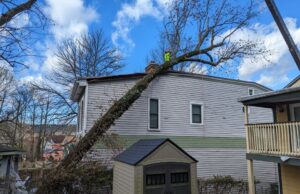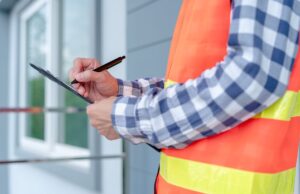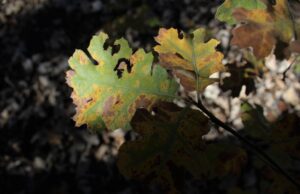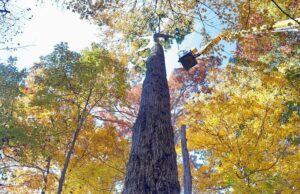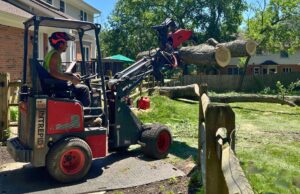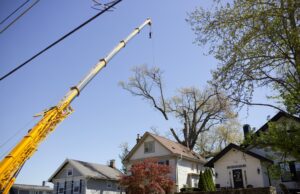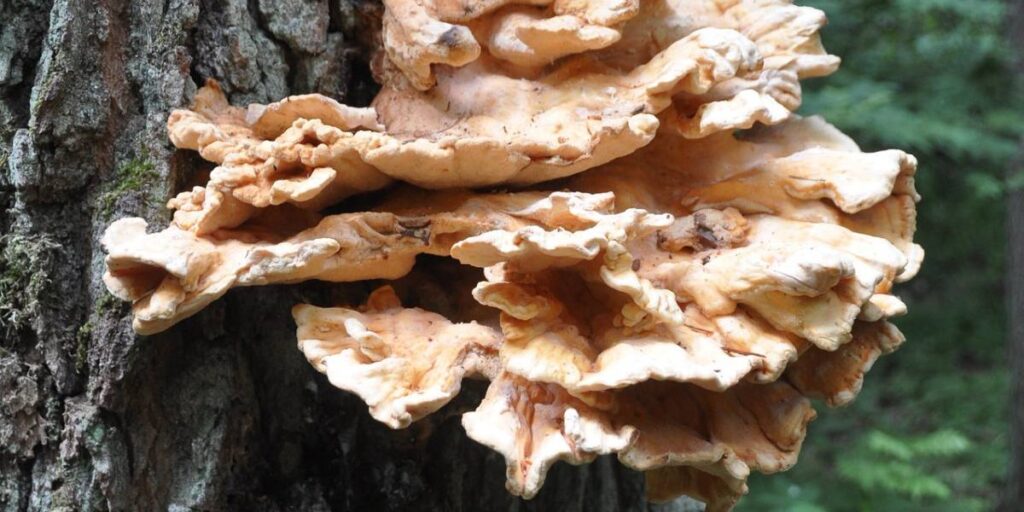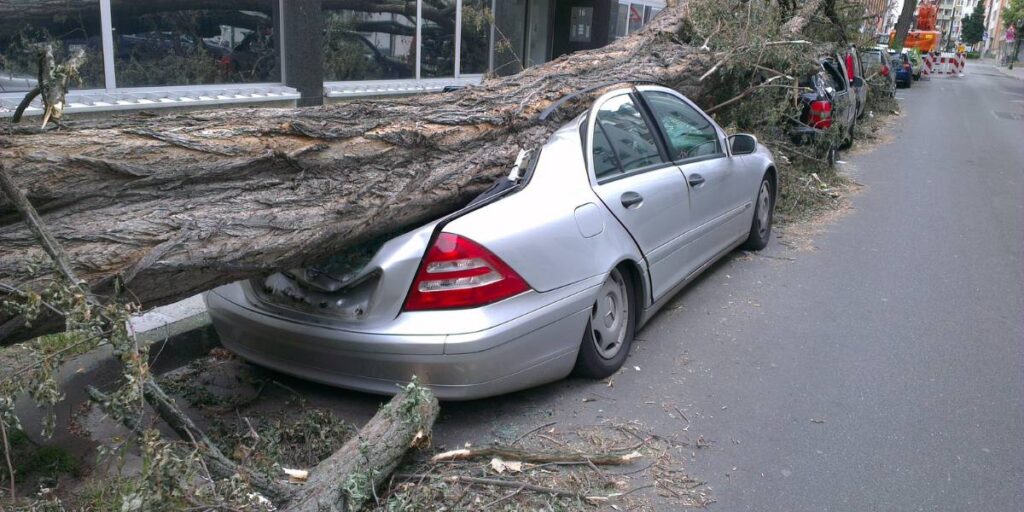Have you noticed any of your trees starting to lean? Leaning trees understandably raise concerns (and questions!) for Cincinnati area homeowners, from worries about whether a leaning tree will fall to wondering if it can be saved or straightened out.
Trees lean for several reasons, and not all of them are cause for concern. However, some types of leaning trees can be extremely dangerous. The key is to understand why your tree is leaning before deciding what to do about it. Keep reading to learn:
- What can be causing your tree to lean
- How to tell if your leaning tree is a hazard
- What you can (and should) do about a leaning tree on your property
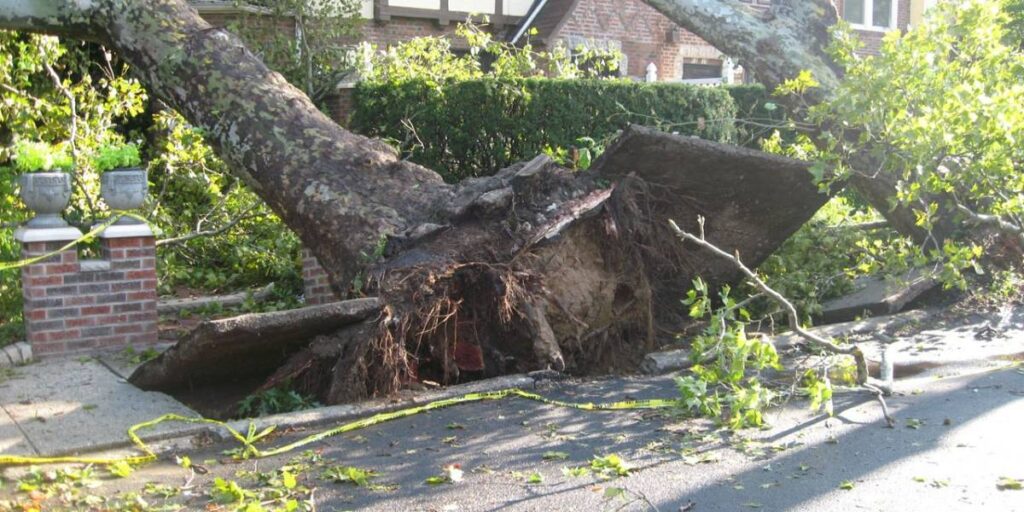
Why is My Tree Leaning?
Trees can lean for various reasons, but most often, it’s related to the roots. This can mean the roots are compromised, or the soil is no longer giving the roots the support they need to stay anchored.
Root Issues That Cause Trees to Lean
The main root issue that causes trees to lean is root rot. Alternatively, the way the roots are growing may be the cause.
Roots can be compromised for several reasons:
- The roots are rotting due to fungal infection
- The roots are too wet and can’t pull oxygen from the soil, causing the rot
- The roots are growing incorrectly
Root Rot Can Cause Trees to Lean
Most trees fall due to root rot.
In the case of a fungal infection causing root rot, trees can be treated with a fungicide if caught early. However, if your tree is leaning it’s probably too late for this kind of intervention.
If the rot is caused by oversaturation, an assessment should be performed to see why this is happening and if an adjustment to your watering schedule is necessary. Again, if your tree is leaning, this intervention may be too late.
If you’re wondering if your roots are rotting, there are several signs to look for:
- Oozing slime from your tree – not to be confused with tree sap
- Mushroom growth on the tree is known as “mushroom rot.”
Girdling Roots Can Cause Leaning
Improper root growth may be to blame for your leaning tree. An example of this is root girdling. This occurs when roots grow in a circle, cinching like a girdle rather than spreading out and anchoring the tree. Small girdling roots can be cut to alleviate the issue. However, if your tree is leaning due to girdling, the problem is likely too far advanced.
Note: While not a systemic issue, roots can become damaged if they are cut during digging or construction, making them poor anchors. Be aware of potential roots ahead of digging and be prepared to deal with problems that may arise.
Soil Conditions That Cause Trees to Lean
Often tree roots are perfectly healthy, and your tree is leaning due to soil issues. These issues include:
- Erosion – Erosion occurs when soil is washed away from the base of the tree and root area. Without sufficient soil to anchor the roots, your tree can begin to lean.
- Wet soil – Wet, soft soil can cause a tree to lean due to its instability. This is especially true if your tree is unbalanced and needs pruning.
- Dry Soil – Dry soil can cause a tree to lean as it may be too brittle and unstable for the tree roots to anchor properly.
When Should You Worry About a Leaning Tree:
Not all leaning trees are dangerous. If the lean has occurred slowly and naturally, the tree is probably not a hazard. However, you should worry about a leaning tree when it shows the signs below. These signs are indicative of structural issues that may make the tree unsafe for the surrounding homeowners and property.
- The tree suddenly begins to lean
- Change in the lean/lean getting worse
- Starts leaning after a storm
- The soil around the tree is cracked or heaving
- The tree is leaning over a high-traffic area/walkway
If you see one of these signs, get your tree checked out by a Certified Arborist ASAP.
Worried about your leaning tree? Call Lefke Tree Experts at 513-325-1783 for an arborist inspection!
The reason your leaning tree is dangerous is that the tree could fall. A leaning tree becomes a hazard when:
The Leaning Tree Could Fall on Structures or Property
A leaning tree doesn’t need to fall here to cause damage to your property. The limbs of a leaning tree could come into contact with your house, damaging gutters, breaking windows, or even ripping air conditioner units from windows!
The Leaning Tree Could Fall on Powerlines
Again, a tree doesn’t have to fall to cause significant issues. A leaning tree’s branches can cause damage to powerlines resulting in fire, electrocution, or death.
The Leaning Tree Could Fall and Injure People or Pets
No one wants to see people or pets injured. Additionally, leaning trees can be an expensive liability that isn’t always covered by insurance.
In Ohio, residents found negligent in caring for their trees can be held liable for any damage the tree causes. This liability extends to both your neighbors’ and public property.
What Can I Do About My Leaning Tree?
Depending on the size of the tree and whether there’s a safety or property damage risk, you can take several courses of action with a leaning tree.
You Can Straighten and Stake a Leaning Tree
Small trees can be straightened and staked to fix leaning issues. However, if an underlying soil or health issue is causing the tree to lean, it must be treated to prevent continued leaning.
You Can Remove a Leaning Tree
If a leaning tree is a hazard, it’s best to remove it. Leaning trees can damage property, and if they fall, the damage can be even worse. Remove your hazardous leaning trees to avoid property damage and ensure safety.
If Your Leaning Tree Isn’t a Hazard, You Can Do Nothing
Leaving it alone is an option if your leaning tree isn’t a threat to people or property. However, if you choose inaction, you should be sure there is no potential hazard from your leaning tree.
Do You Need Help with a Leaning Tree?
If you have questions about a leaning tree, an inspection by a certified arborist is a great place to start. So, if you need help with a leaning tree, call Lefke Tree Experts, Cincinnati’s most trusted tree service company. We’ll provide an assessment and recommend the best course of action.
Need tree service in the greater Cincinnati Region? Whether you have a leaning tree in Anderson or need pruning in Wyoming, contact Lefke Tree Experts today!

